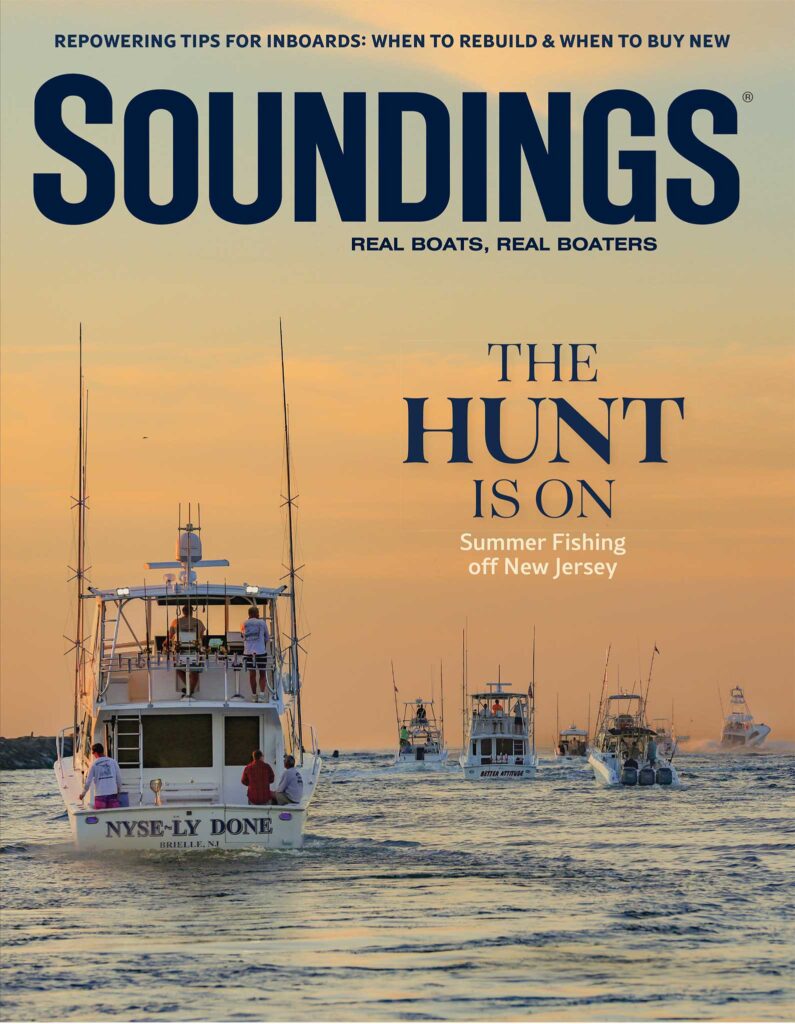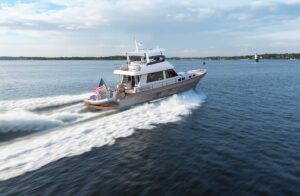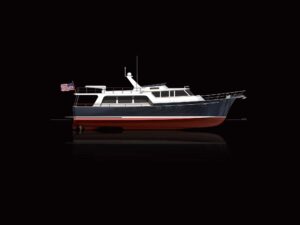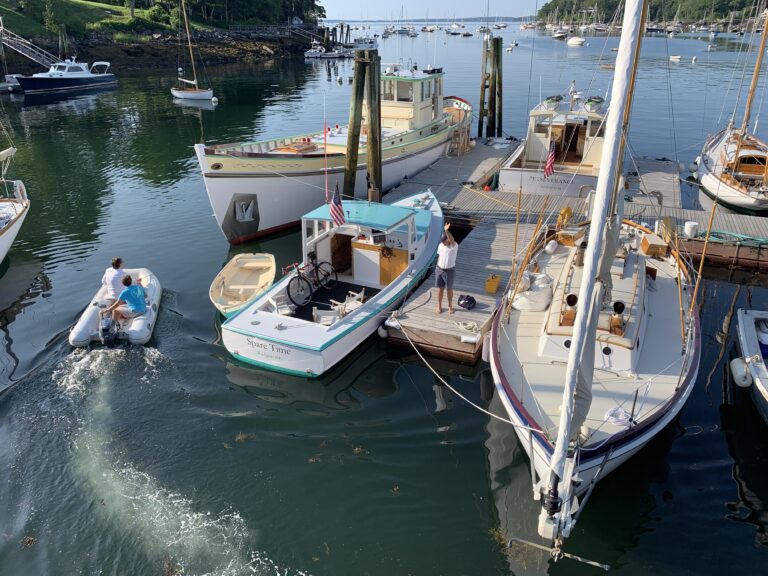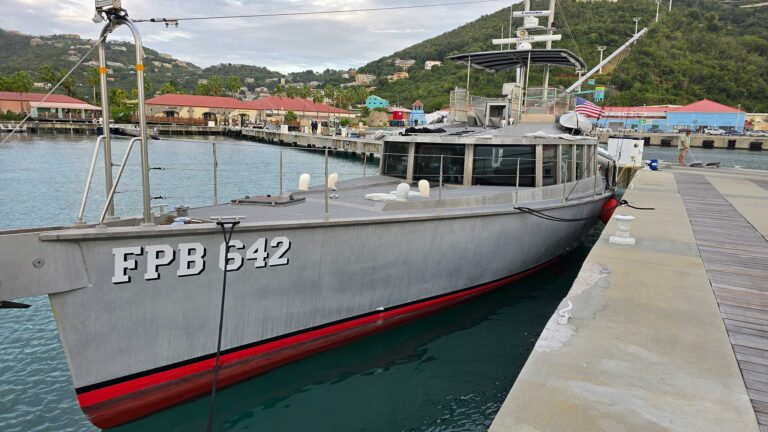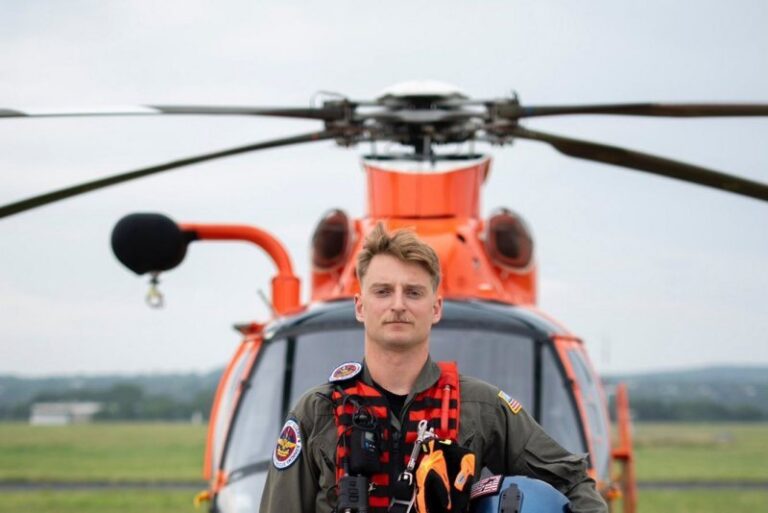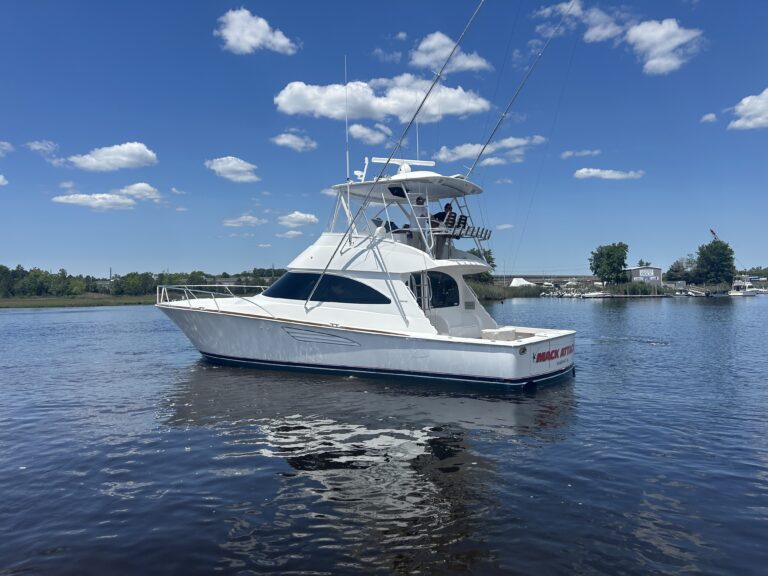
Old boats can suffer when they’re kept on the hard for a number of years. The 40-foot cabin cruiser that David Arch was looking at in 2001 had suffered the usual indignities: It was dirty, it was grimy and its paint was peeling and chipped. But it was a Huckins, which meant that it was just the boat the 70-year-old from Pocasset, Massachusetts, wanted. “I found her in a yard on Popes Island in Fairhaven-New Bedford,” says Arch, who runs a dock and mooring business. “She’d been stored for several years without annual maintenance. You really needed to look through the peeling paint to see her soul.”
Arch became the enthusiastic owner of the 1947 Huckins Sportsman, at a price he recalls being about $27,000. The boat reminded him of one he knew from his high school days, owned by an elderly friend. A period of extensive refinishing and miscellaneous repairs followed the purchase.
The Huckins was a far cry from his first boat: a dinghy with a 5-hp outboard. “I grew up on Cape Cod and have been boating all my 70 years,” says Arch, who carries a 200-ton master license for research vessels and tugs. “The rule was, as soon as we could carry down and put a motor on the boat, we could have one.”
The Huckins, named Junet, was a one-owner boat, having belonged to Albert Little of the Anderson-Little clothing store chain. Little was an avid swordfisherman. “He ordered her just before our entry into World War II,” Arch says. “Huckins then shifted to PT boat production, so he had to wait until 1947 for his boat.”
Junet’s home port today is on the Pocasset River, also known locally as Barlows River. “We usually go between Cape Cod and south Florida annually, offshore if it’s nice, or on the ICW if it’s stormy,” Arch says. Power comes from a pair of 8.2-liter Detroit diesels—“fuel pincher V-8s,” he calls them. Junet cruises at 15 to 20 knots, running 2500 to 2900 rpm with a top speed of around 24 knots, according to the owner’s figures. Junet’s 1,200-nautical-mile trip to Fort Lauderdale usually consumes about 1,050 gallons of fuel at an average speed of 17 knots. At 7 to 8 knots, fuel use can be less than half that, Arch estimates.
The boat carries a full slate of electronics, including a Raymarine RL70C radar/plotter linked with an L760 sounder/plotter (with wind speed) and a Raymarine autopilot. A laptop runs CAPN software, with automatic identification system information displayed on the laptop. “The CAPN software is linked to the full data stream except for the radar, so that’s the primary reference,” Arch says.

Junet spent the winter at Arch’s shop at Wenaumet Bluffs Boat Works getting what Arch calls “a good IRAN: inspect and repair as necessary,” along with a paint job. Working on the 73-year-old boat is part of the enjoyment of owning a classic, he says.
“I’m one of those local guys, but retired now, so I lean on some of the folks I used to work with,” he says. “Kingman’s [Yacht Center] in Cataumet has been very helpful, as well as Teague Campbell at Campbell’s Boat Works.”
When the Huckins is back in the water, Arch plans to head north to Canada’s Trent-Severn Waterway. “I’d take a couple of weeks to a month just to enjoy the area,” Arch says. “It’s like cruising Maine, except it’s always high tide and there are no lobster pots.”
There’s plenty of room on board the Huckins for such a lengthy cruise, he says. The cockpit has good access to the water, the cabin has seats and bunks, there’s a galley down, and a V-berth is forward with a head compartment.
Handling the varying sea conditions of such a passage isn’t a problem for the Huckins, Arch says; “it’s a half-scale PT boat” and shares many properties of those fast, maneuverable military craft, riding company founder Frank Pembroke Huckins’s planing Quadraconic hull, also used on World War II PT boats.
“It’s made for traveling in the mid- to high-teens and gives a great ride,” he says. “The sharp entry breaks the waves, the flat stern makes her easy to plane, and the long, skinny hull tracks straight.”
Wherever the Huckins goes, it will continue to carry the name Junet. “When you buy a 50-year-old, one-owner boat,” he says, “there’s a certain respect in not changing much.”
BACKGROUND
Frank Pembroke Huckins unveiled his Quadraconic planing hull in 1928. He called his boats Fairform Flyers and sold his first one to rubber tycoon David
Goodrich for $15,000. More than 90 years later, Huckins Yacht Corp. of Jacksonville, Florida, is still family owned. It sells models from 38 to 56 feet.
This article originally appeared in the June 2020 issue.

